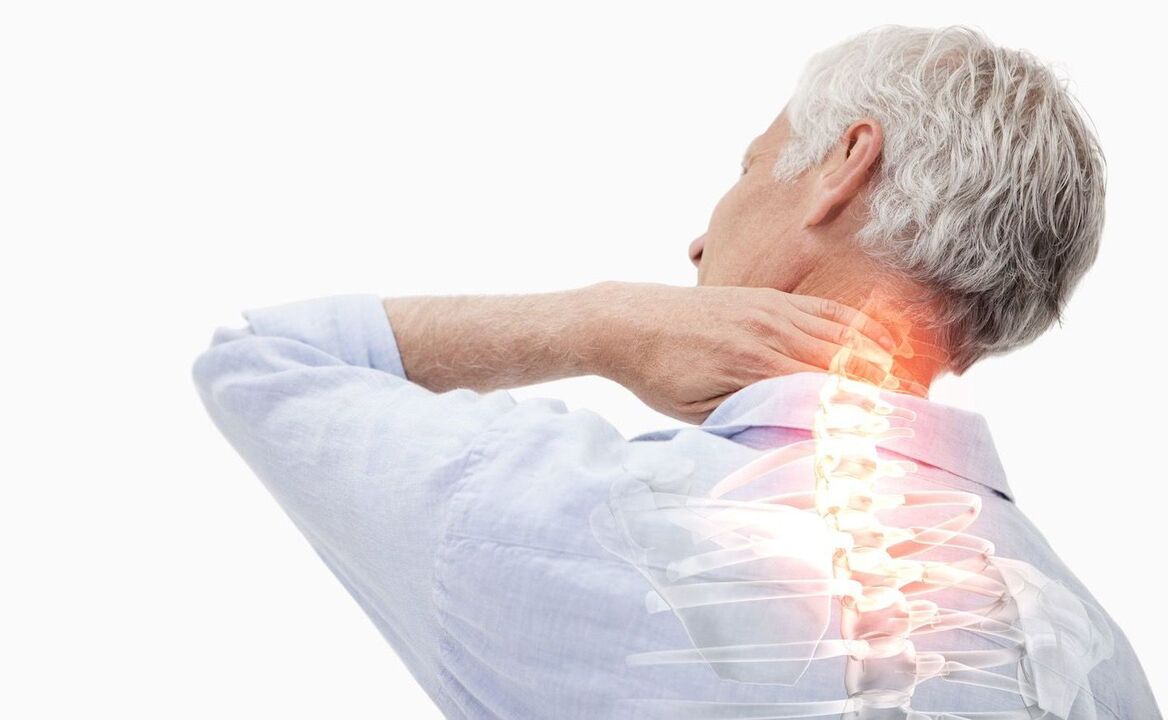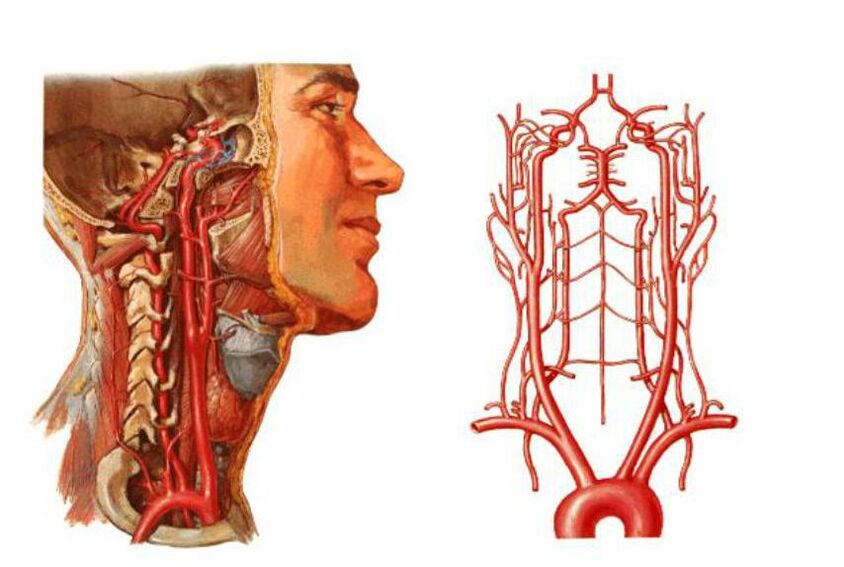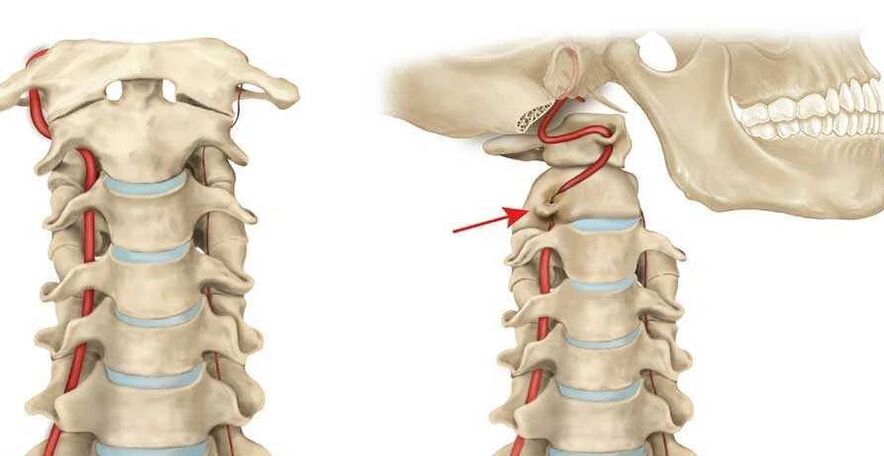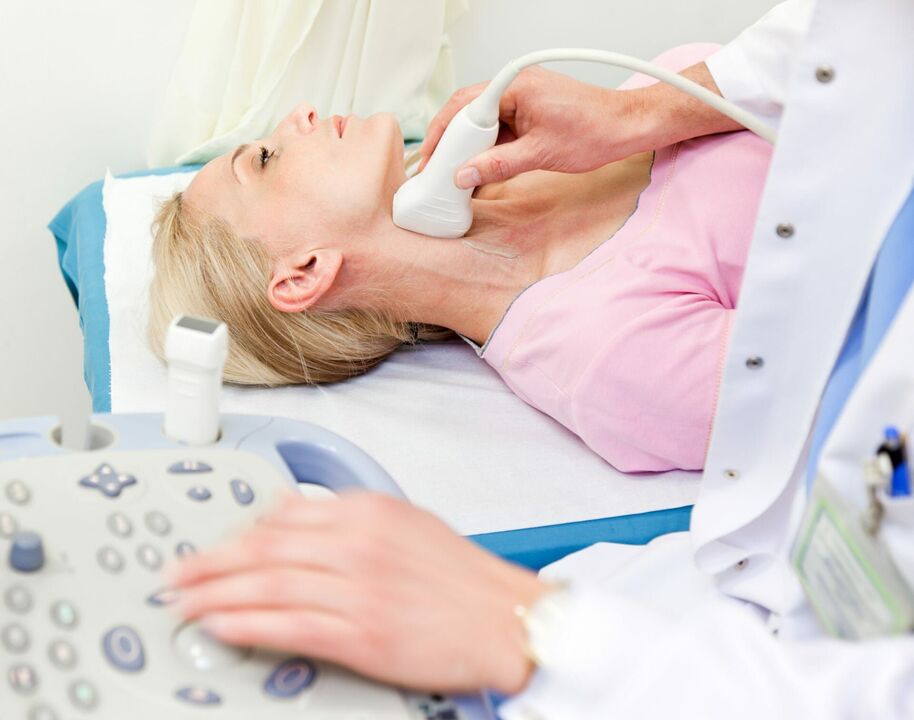Among all pathological processes affecting the spine in its different parts, cervical osteochondrosis is considered one of the most common. This disease leads to many complications because it affects the spinal cord and also negatively affects the functioning of the brain.
According to the statistics of 2017, the disease has become much younger. If previously osteochondrosis was observed mainly in people after the age of 40, today various stages of neck osteochondrosis are detected in 90 percent of people over the age of 25. For this reason, it is important to know as much as possible, from what the pathology is to the treatment methods.

What is cervical osteochondrosis?
In medical practice, the words cervical osteochondrosis mean an acquired progressive disease that affects a certain part of the spine. This pathological process is characterized by degenerative-dystrophic processes in the tissues of the intervertebral discs, which are shock absorbers for the cervical vertebrae.
Degenerative-dystrophic changes in intervertebral discs occur as a result of their wear and deformation. As a result, the distance between the vertebrae decreases, resulting in the following results:

- Narrowing of the spinal canal in certain areas of the spine.
- Compression of the vertebral arteries - large blood vessels that supply blood to the brain. Because of this, the supply of the brain deteriorates and the blood circulation in the cervical spinal cord is disturbed.
- Intervertebral discs can be deformed and flattened. This leads to the compression of certain areas of the spinal cord and nerves, most often compression of the nerve roots.
All these problems are not only blood circulation disorders in the brain, neck pain, headaches, etc. not threatening. The development of osteochondrosis of the cervical spine is dangerous due to neurological problems, disruption of the central nervous system, and damage to brain tissue.
According to the international classification of diseases, several separate codes are assigned to osteochondrosis of the cervical spine. According to ICD 10, the disease code depends on the age at which the disease was diagnosed:
- M02 - dystrophy of intervertebral discs in adolescence.
- M42. 12 – degenerative process in the neck region in adults.
Many factors depend on the age of the patient and the degree of development of the pathological process, for example, the results, complications, symptoms and, of course, the principles of treatment.
Reasons
Knowing the reasons for the development of cervical osteochondrosis can play a decisive role in the diagnostic process, as well as in determining the principles of combating the disease.
But before listing the reasons, it should be said that doctors have identified two factors that lead to the development of this pathological process:
- Pathological - destruction of intervertebral discs and other vertebral structures with the involvement of nearby tissues, vessels and nerve cords in the pathological process occurs under the influence of adverse external factors. The more severe these factors and other pathologies are, the faster the disease develops.
- Physiological - the development of pathology is primarily based on age-related changes. We are talking about the natural aging of the cartilage tissue in the spine, salt deposits, etc.
If we list more specific causes of cervical osteochondrosis, they are as follows:
- Disruption of metabolic processes in the body, as well as certain stages of obesity.
- Physical inactivity is a phenomenon characterized by limited mobility. We're not just talking about injuries or illnesses, but also sedentary lifestyles and sedentary work.
- Pathologies of the cardiovascular system, pressure changes, etc. , which contribute to the disruption of blood circulation in the brain.
- Incorrect posture includes scoliosis, rheumatism and even various forms of flat feet.
- Damage to the cervical spine. In this case, we are talking about sprains, bumps, bruises. Damage to other parts of the spine can affect the development of cervical osteochondrosis.
- Excessive physical stress on the cervical spine as a result of strenuous exercise or severe physical exertion, depending on the person's activity.
- A sedentary lifestyle is also dangerous because of the constant stress on the cervical spine and the entire spine when you sit incorrectly or on uncomfortable furniture.
- Cervical lumbar hernia, as well as various accompanying diseases.
- Forced holding of the head in an uncomfortable or unnatural position for a long time. In this case, not only muscle tension occurs, but also the spine bends in the cervical region.
- Doctors consider constant stress and nervous tension to be a very common cause.
- Congenital anomalies in the structure of the spine are considered one of the reasons.

What are the health risks?
As mentioned earlier, the cervical spine contains not only the spinal cord and various nerve branches, but also the spinal arteries, cerebellum, and medulla oblongata, which supply blood to the occipital part of the brain.
With the development of cervical osteochondrosis, the nearby tissues become inflamed. In addition, the development of pathology threatens the compression of nerve roots and compression of blood vessels, the consequences of which are as follows:
- Osteochondrosis is accompanied by deformation of the spine, resulting in narrowing of the spinal canal in certain areas. This can cause compression of the spinal cord and nerve branches, which promises severe neurological problems. In severe cases, a person feels pain and may even lose control of certain parts of the body (mainly arms or face).
- Compression of the neck veins, as already mentioned, is accompanied by a violation of blood circulation in the occipital region of the brain. At this time, the brain stops receiving the necessary amount of oxygen and food, and oxygen starvation begins. If blood circulation is disturbed, there is a real risk of ischemic stroke and various neurological pathologies.
Syndromes
Speaking of the danger posed by cervical osteochondrosis as it progresses and is not properly treated, the disease can cause a number of complications and syndromes.
The main syndromes are:
- Vertebral.
- Vertebral artery.
- Koreshkovy.
- Heart.
It is important to know that each of these symptoms is accompanied by painful sensations of a different nature, as well as many unpleasant clinical signs. A person may experience dizziness, tinnitus and more.
Vertebral syndrome
It talks about the direct relationship between cervical osteochondrosis and bone and cartilage tissues. Symptoms of this type of pathology are also associated with damage to the mentioned tissues:
- Neck movements are partially or completely limited.
- Head movements are accompanied by painful sensations in the neck.
- X-ray shows morphological changes in tissues (vertebral and intervertebral bodies).
It should be noted that vertebral syndrome is always accompanied by these three clinical signs. If at least 1 of them is missing, the diagnosis will be completely different.

Vertebral artery syndrome
This syndrome is caused by narrowing of the vertebral artery, which causes vestibular, vascular and autonomic problems. In this case, the main symptoms are extensive:
- Headache and migraine.
- Visual impairment.
- Noises in the ears.
- Frequent dizziness and more.
The most dangerous symptom is fainting, which indicates a severe lack of oxygen.
Radicular syndrome
It occurs when the roots of the spinal cord are damaged. At this time, nerve conduction is disrupted, a person may feel pain or lose sensitivity in certain parts of the body, or even experience paralysis.
Depending on which of the 8 radicular pairs, the following symptoms are determined:
- 1 pair - numbness or pain in the back of the head;
- 3rd pair - violation of the chewing reflex, numbness of the tongue and unpleasant sensations behind the ears;
- 4 pairs - pain in the collar area, violation of swallowing reflex;
- 5 pairs - disorders of the shoulder girdle accompanied by problems with the movement of the arms;
- 6th pair - the patient begins to feel pain and numbness in the forearm and shoulder blades;
- 7th pair - hands and fingers (usually index and middle) are numb;
- Pair 8 - similar problems to the previous point, but numbness is felt in the ring and little finger.
Based on the described features, it is sometimes possible to determine that the root pair is affected by radicular syndrome.
Heart syndrome
Despite the fact that the pathological process is still localized in the cervical spine, the syndrome has all the symptoms of cardiac pathologies. The clinical picture is as follows:
- Rapid pulse.
- Pain in the sternum.
- Shortness of breath, weakness, lethargy, decreased performance.
The degree of development of the disease
When we talk about the degree of osteochondrosis of the cervical spine, we mean the progressive stages of the pathological process, which are distinguished by clinical signs. In general, there are four stages of development of the disease:
- The first stage is characterized by vague symptoms. Patients complain of minor headaches, during the initial examination, the doctor notes mild muscle stiffness.
- Pain in the cervical spine and head is more frequent, more intense and spreads to the shoulders and arms. It is caused by damage to the pathological intervertebral discs and compressed nerve roots. Pain intensifies when turning the head, throwing back and bending forward.
- In the third stage, the pain is constant, muscle weakness is noted in the arms, and tears are formed in the intervertebral discs. Movements in the neck area are restricted, dizziness often occurs.
- The fourth stage is accompanied by the complete destruction of the intervertebral disc, cartilage tissue is replaced by connective tissue. In addition to pain and dizziness, coordination problems are observed, vertebral arteries are often compressed.
Signs and symptoms of cervical osteochondrosis
In order to consult a doctor in time, it is necessary to clearly understand the symptoms of cervical osteochondrosis. In some cases, such knowledge allows you to seek help in the early stages of the disease, when it is easier to treat.
In general, the symptoms of osteochondrosis of the cervical spine are as follows:
- Pain in osteochondrosis is always present, only its intensity and frequency differ. Pain is the first clinical sign. Their intensity depends on the stage of development of the disease, they are dull or oppressive. Painful sensations are mainly present in the neck and occipital region, but can also spread to the temporal region, shoulder girdle and arms.
- In most cases, there are manifestations of damage to the vestibular apparatus. It is often about unexplained dizziness, nausea, poor coordination of movements, uneven gait, loss of place.
- One of the most common clinical signs is neck muscle stiffness and stiffness of movement. It is difficult for a person to turn his head, lower it and throw it back, the movements are accompanied by pain attacks.
- Many patients report a sensation of "goosebumps" extending across the scalp or a characteristic tingling sensation.
- Muscle weakness and numbness occurs in the arm.
- There are often psychological manifestations expressed by depression, drowsiness, sudden mood swings, irritability or irritability.
- Due to poor blood circulation and damage to the brain tissue, dizziness increases, and there is a hissing, pulsating and ringing noise in the ears.
- Most patients report a worsening of vision, as well as pain in the eyeballs, especially when trying to squint to the left, right, up or down.
Sometimes it is possible to determine the degree of development of the pathological process by symptoms. However, this is still not enough for a complete diagnosis, and a number of diagnostic measures are required.

Diagnostic methods
The diagnosis of cervical osteochondrosis is necessary to determine the location and stage of development of the disease. For a complete diagnosis, the following diagnostic methods are needed:
- Radiography is the main method for determining the degree and location of spinal deformity.
- Computed tomography can be used to more accurately diagnose pathological changes in the vertebrae and intervertebral discs.
- MRI (magnetic resonance imaging) - allows for a detailed examination of discs and vertebrae, the presence of hernias, protrusions, the degree of damage, etc.
- Dopplerography - with this examination, it is possible to find the place of compression of the artery and assess the degree of circulatory disorders.
Treatment methods
Treatment of neck osteochondrosis always includes an integrated approach. The principles of treatment depend on many factors, for example, the age of the patient, the stage of development of the disease, the severity of the clinical picture, etc.
Nevertheless, in this case, you cannot do without a doctor, and you can first contact a general practitioner who will refer you to a vertebrologist.
As for the integrated approach: osteochondrosis of the cervical spine is treated with the help of drug therapy, physiotherapy, massages, exercise therapy and other methods that are worth talking about in more detail.
Drug treatment
The basis of the treatment of cervical osteochondrosis is drug therapy, which involves the use of tablets, drugs and medicines of the following groups:

- Pain relievers - analgesics and antispasmodics. The first ones directly dull the nerve centers and thereby eliminate painful sensations. The latter allows you to eliminate spasm of the neck muscles, improve blood flow and relieve pain.
- NSAIDs - non-steroidal anti-inflammatory drugs are needed to reduce inflammation, most of them also relieve pain. Often, these drugs are used in the form of a gel or ointment that is rubbed into the affected area.
- Muscle relaxants are another way to relieve muscle spasms in the cervical region.
- At certain stages of osteochondrosis of the spine, chondroprotectors are mandatory, as they contribute to the regeneration of bone tissue.
- B vitamins - normalize the metabolic processes of nervous tissue, improve the conduction of nerve impulses and promote the activity of the central nervous system.
Remember that the treatment should be carried out only under the supervision of a doctor who is responsible for prescribing each drug, as well as determining the duration and dosage.
Physiotherapy
Treatment of neck osteochondrosis will be many times more effective using certain physiotherapy methods:
- Electrophoresis.
- Laser therapy.
- Ultrasound.
- Massage.
Massage therapy should be performed by an experienced doctor, the treatment is carried out in a course of at least 10 sessions. Cervical massages help normalize blood circulation, restore elasticity, muscle tone, relieve pain, etc.
Physiotherapy
Therapeutic exercises also help speed up recovery, but only during the recovery stages. It is important that exercises do not cause discomfort and pain to the patient. Exercise therapy aims to strengthen muscles and relieve discomfort during movements by increasing the flexibility of muscle fibers.
The exercise technique is first prepared by a physiotherapist, and then the patient can do gymnastics independently at home.
Manual therapy
Manual therapy is based on the principle of restoring motor functions and mobility between vertebrae. At first, the manipulations consist of a light relaxing massage, then the doctor applies more and more force, applying pressure and turning the neck to the vertebrae.
Kuznetsov applicator
The use of Kuznetsov applicators is one of the methods of treatment of spinal diseases, including osteochondrosis. The effect of the apparatus on the cervical spine normalizes metabolic processes, relieves pain, increases muscle tone, improves blood circulation, increases the permeability of nerve tissue, etc.
Treatment at home
All therapeutic measures are carried out at home, except for the first stages of physiotherapy, massage (in some cases) and exercise therapy. But now we are talking about traditional medicine and we will consider some of the most effective recipes:
- To use horseradish - take a leaf of this plant, pour boiling water on it and put it on your neck, tie it with a bandage. You can leave it on while you sleep to increase the effect.
- If there are no contraindications from a doctor, warming the cervical spine would be a good tool. The simplest method is to use pepper plaster, but you can heat the wax cake by applying it 1-2 times until it cools completely.
Disease prevention
In order to prevent the development of the disease or its return after treatment, it is necessary to prevent osteochondrosis of the cervical spine. It consists of the following simple recommendations:
- Sleep on a flat, hard surface, it is better to buy a special orthopedic mattress and a pillow that takes the shape of your head.
- To prevent the disease, control your physical activity and do not overload your spine. If you have to lift weights, do it smoothly and keep your back straight.
- If your job requires you to sit for long periods of time, take a break. Every hour you need to walk or stretch stiff muscles with simple gymnastic movements.
To prevent osteochondrosis, it is useful to swim for 2-3 minutes every day and hang on the bar.
























